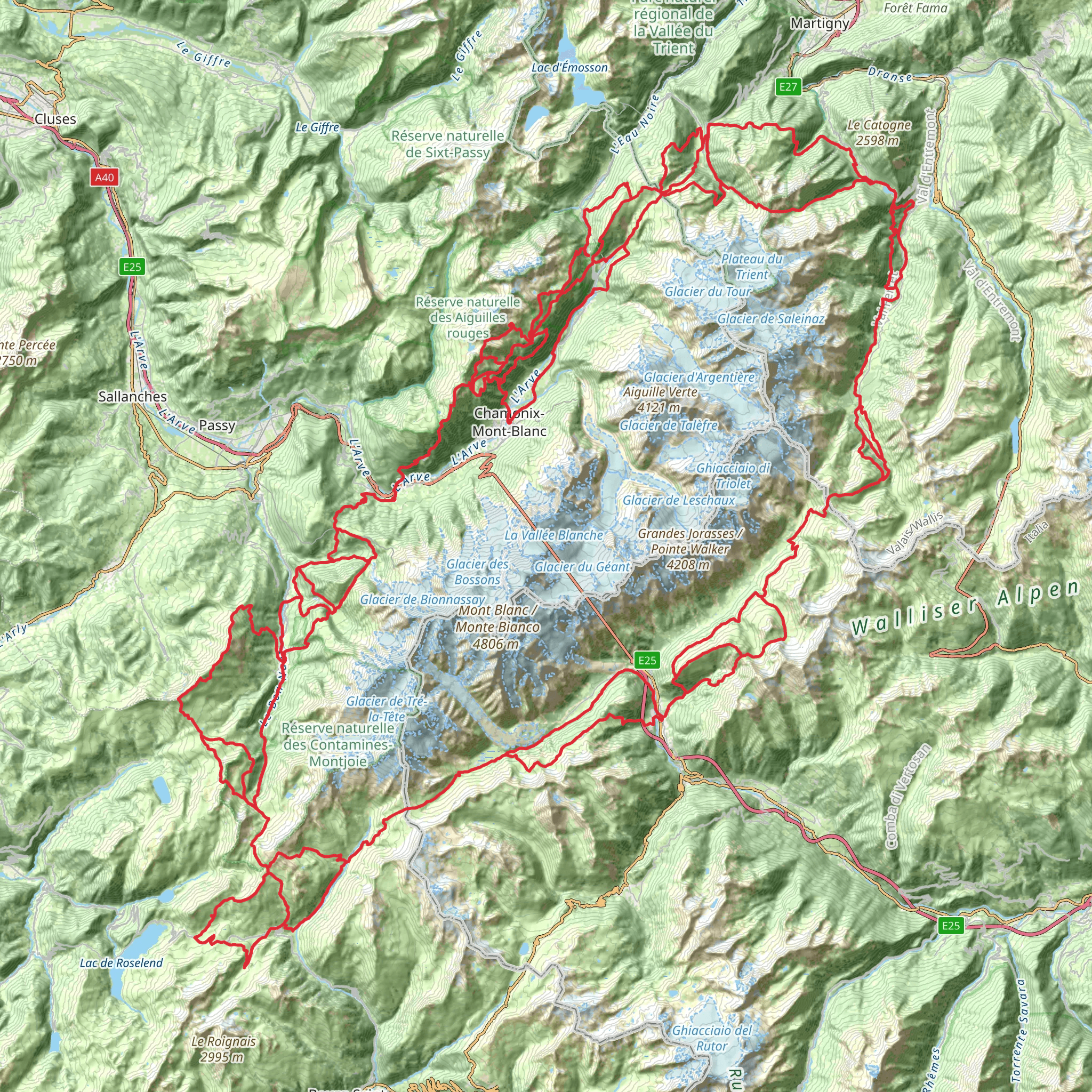Download
Preview
Add to list
More
164.9 km
~11 days
8079 m
Multi-Day
“The Tour du Mont Blanc offers seasoned hikers breathtaking landscapes, cultural richness, and historical intrigue across three countries.”
Embarking on the Tour du Mont Blanc is a journey through some of the most breathtaking landscapes in Europe, spanning approximately 165 km (about 102 miles) with an elevation gain of around 10,000 meters (32,700 feet). This loop trail begins near Les Houche, France, and is renowned for its challenging terrain, making it suitable for experienced hikers seeking an extra difficult adventure.
Getting There
To reach the trailhead near Les Houche, France, you can travel by car or public transport. If driving, Les Houche is accessible via the A40 motorway, which connects to major cities like Geneva and Chamonix. For those using public transport, trains run from Geneva to Les Houche, with connections available from other major European cities. From Les Houche, local buses or taxis can take you to the starting point of the trail.
Trail Highlights and Landmarks
The Tour du Mont Blanc offers a diverse array of landscapes, from lush valleys to rugged mountain passes. As you traverse the trail, you'll pass through three countries: France, Italy, and Switzerland, each offering unique cultural and natural experiences.
France
Starting in France, the trail takes you through the Chamonix Valley, a region steeped in mountaineering history. The town of Chamonix itself is a hub for outdoor enthusiasts and offers stunning views of Mont Blanc, the highest peak in the Alps. As you ascend, you'll encounter the Col de la Croix du Bonhomme, a high mountain pass offering panoramic views of the surrounding peaks.
Italy
Crossing into Italy, the trail descends into the Aosta Valley, known for its rich history and charming villages. Courmayeur, a picturesque town at the foot of Mont Blanc, is a perfect spot to rest and enjoy Italian hospitality. The trail continues through the Val Veny and Val Ferret, where you'll be treated to views of the Grandes Jorasses and other iconic peaks.
Switzerland
Entering Switzerland, the trail leads you through the quaint village of La Fouly and the scenic Val Ferret. The Swiss section is characterized by its pristine alpine meadows and traditional chalets. The climb to the Fenêtre d'Arpette is one of the most challenging parts of the trail, but the views from the top are well worth the effort.
Nature and Wildlife
The Tour du Mont Blanc is home to a diverse range of flora and fauna. In the lower valleys, you'll find lush forests of pine and larch, while higher elevations are dotted with alpine flowers such as edelweiss and gentians. Wildlife enthusiasts may spot ibex, chamois, and marmots along the trail. Birdwatchers can look out for golden eagles and bearded vultures soaring above the peaks.
Historical Significance
The region surrounding Mont Blanc has a rich history, with evidence of human habitation dating back to prehistoric times. The trail itself has been used for centuries by traders and pilgrims crossing the Alps. In more recent history, the area played a significant role during World War II, with many trails used by resistance fighters and smugglers.
Navigation and Safety
Given the trail's difficulty, proper preparation is essential. The terrain can be steep and rocky, with unpredictable weather conditions. It's crucial to have a reliable navigation tool like HiiKER to ensure you stay on track. Additionally, carrying appropriate gear, including sturdy hiking boots, weatherproof clothing, and sufficient food and water, is vital for a safe and enjoyable hike.
The Tour du Mont Blanc is a challenging yet rewarding adventure, offering a unique blend of natural beauty, cultural experiences, and historical insights. Whether you're drawn by the stunning landscapes or the rich history, this trail promises an unforgettable journey through the heart of the Alps.
What to expect?
Activity types
Comments and Reviews
User comments, reviews and discussions about the Tour du Mont Blanc, France.
4.89
average rating out of 5
91 rating(s)

